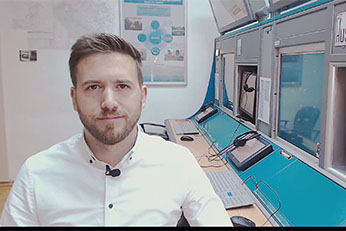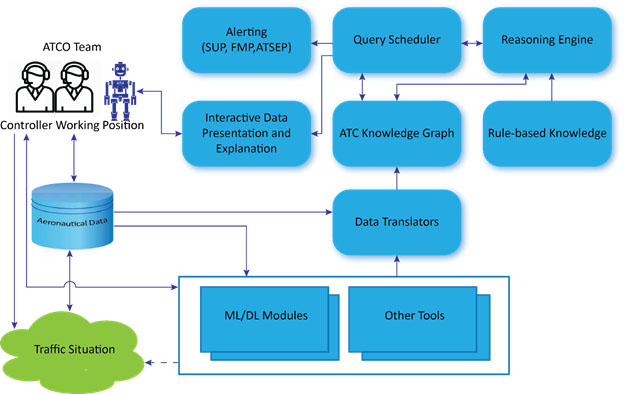
Air traffic management is all about teamwork. A recently started SESAR research project is investigating how to make artificial intelligence an integral part of the air traffic control team, helping to improve situational awareness and decision making in sometimes very complex traffic situations. Read our interview with Prof. Tomislav Radišić, University of Zagreb, Coordinator of the AISA (AI Situational Awareness Foundation for Advancing Automation) project.
Why is artificial intelligence (AI) needed in air traffic management (ATM)? Is the goal to replace the human?
In normal conditions, Europe has to deal with a very complex and busy airspace: automation and AI solutions will obviously not replace the human, but on the contrary; they will ensure that air traffic controllers have the support tools they need to make the best decisions and handle traffic efficiently. In many ways, it’s about making AI part of the team! The usage of artificial intelligence is more and more common within automation, and air traffic management as a technology-driven industry is no exception!
How is AI being developed to improve the performance of ATM? Can you give concrete examples?
By combining reasoning engine with machine learning, it will be possible for AI to become aware of the situation in a manner similar to a human. In this way AI will be able to participate in the team situational awareness[1] and therefore this shared situational awareness will be developed for a given traffic situation. ATM will improve using shared situational awareness while AI will, for example, be able to assess complex interactions between objects, draw conclusions and explain the reasoning behind them.
What is meant by shared situational awareness and why is that a challenge in a human-machine interface?
It is clear that shared situational awareness is very important in teams, for example, between the planning and the tactical air traffic controllers. The challenge comes when the system should also be part of the team. For this, the air traffic controller (ATCO) should know what the system knows, and the system should know what information is available for the human. The most interesting part is that the system should know what it does not know, e.g. what is the linked information cluster that is important for the work of the team but it is not directly assessed by the system.
What is the main aim of the AISA project?
The main aim of the project is to investigate if human and machine can work in a team and what are the current and likely future possibilities in this field.
The main project objectives:
- explore the effects of human-machine distributed situational awareness and opportunities for automation of monitoring tasks in en-route operation,
- identify the data needed by air traffic controller to ensure that the proposed solution is correct and develop the method to provide that data,
- investigate methods for adaptation of the automated system to changes of the environment, ensuring business continuity and safety.
Is this first time such research has been done? Or are you building on previous research?
There is a lot of research ongoing in automation and in the field of AI. In terms of SESAR projects, AISA is built on the former AUTOPACE and BEST projects. On the other hand, the project includes some experiments which will be quite novel in the field of ATM; we will try to produce knowledge graphs (KG) based on the aeronautical data exchange models and combine those knowledge graphs with machine learning to develop KG-based artificial situational awareness system.
What benefits do you hope your project will bring? How do you hope the results of your project will be used?
It is a shared interest among the stakeholders in the European ATM community that new ATM-related methodologies are researched properly, and only validated approaches are taken towards implementation. It is our hope that AISA can bring an important added value to the digital transformation that is underway in ATM.

General additional information on AISA:
The project brings together a consortium of European partners from Austria, Croatia, Germany, Hungary, Spain and Switzerland. The Faculty of Transport and Traffic Sciences at the University of Zagreb is the coordinator of this project and the consortium has four other universities on board: Johaness Kepler University of Linz, Technische Universität Braunschweig, Universidad Politécnica de Madrid, Zurich University of Applied Sciences, an Air Navigation Service Provider: Skyguide and an SME: Slot Consulting. The project started on the 1st of June 2020 and will run for two and a half years.
This project has received funding from the SESAR Joint Undertaking under the European Union's Horizon 2020 research and innovation programme under grant agreement No 892618
Project coordinator: Prof. Tomislav Radišić
Email: [email protected]
Website: www.aisa-project.eu
[1] The level of situational awareness a team can achieve is an overlap of each member’s individual level of situational awareness, including the AI.
